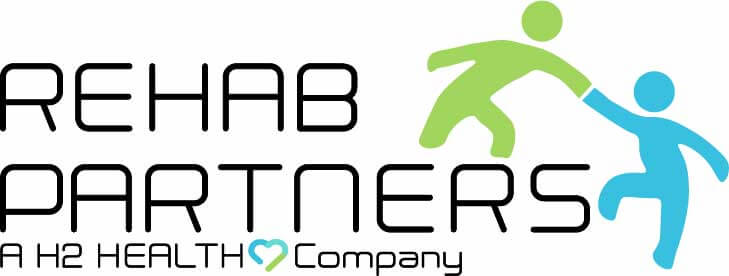
Neck pain can seriously hamper your daily life. It can make even the simplest tasks, like turning your head or looking down at your phone, an uncomfortable experience. Neck pain can occur due to various reasons, such as poor posture, injury, stress, or underlying medical conditions. Whatever the cause may be, physical therapy for neck pain can offer effective relief.
This blog will help you understand how physical therapy for neck pain can be both a solution and a preventive measure. Additionally, we will explore effective techniques and exercises that can alleviate your discomfort and improve your overall well-being.
What is Physical Therapy for Neck Pain, and How It Helps?
Physical therapy (PT) for neck pain is a specialized treatment plan that targets the muscles, tendons, and ligaments in your neck. It helps improve neck mobility, reduce pain, and prevent future injuries.
By focusing on personalized exercises and techniques, physical therapy can be a game-changer for those suffering from chronic neck pain. When it comes to neck pain, physical therapy can help in the following ways:
Reducing Pain and Inflammation
Physical therapists use modalities like ice/heat packs, ultrasound, or electrical stimulation to reduce pain and inflammation in the neck muscles.
Improving Mobility and Range of Motion
Gentle stretches and manual therapy techniques like joint mobilization or soft tissue massage can help improve the range of motion in stiff neck muscles.
Strengthening Weakened Muscles
Weakness in certain neck muscles can contribute to neck pain. Physical therapists design exercises to target these specific muscles and strengthen them.
Correcting Posture
Poor posture is a common cause of neck pain in millions of people. A physical therapist can assess your posture and provide corrective exercises and techniques to improve it, ultimately relieving your neck pain.
What Physical Therapy for Neck Pain Involves?
When you visit a physical therapist, they will assess the cause of your neck pain by reviewing your medical history, conducting exams, and possibly using imaging studies.
Based on the assessment, your certified physical therapist will create a tailored treatment plan. This may include manual therapy, exercises, and other methods to ease pain and enhance function.
Manual Therapy Techniques
Manual therapy involves hands-on techniques that reduce neck pain and improve mobility. Some common manual therapy techniques for neck pain include:
Joint Mobilization
This technique involves applying gentle pressure to the joints in your neck to improve their range of motion and reduce stiffness.
Soft Tissue Mobilization
Soft tissue mobilization focuses on manipulating the muscles and soft tissues around your neck to alleviate pain and improve circulation.
Trigger Point Therapy
Trigger points are tight knots in your neck muscles that can cause pain. Trigger point therapy involves applying pressure to these points to release tension and reduce pain.
Effective Exercises for Neck Pain
In addition to manual therapy, your physical therapist will likely recommend specific exercises to strengthen your neck muscles and improve flexibility.
Here are some exercises commonly prescribed for neck pain:
Neck Stretches
Stretching exercises can help improve flexibility and reduce neck muscle tension. Some effective neck stretches include:
- Chin Tucks: Sit or stand up straight and gently tuck your chin towards your chest, holding for a few seconds before releasing.
- Side Neck Stretch: Tilt your head to one side, bringing your ear towards your shoulder until you feel a stretch in the opposite side of your neck.
- Upper Trapezius Stretch: Gently pull your head towards one shoulder while keeping the opposite shoulder relaxed to stretch the upper trapezius muscle.
Strengthening Exercises
Strengthening exercises aim to build the muscles that support your neck. Some key exercises include:
- Isometric Neck Exercises: Press your hand against your forehead and resist the movement with your neck muscles. Repeat on the sides and back of your head.
- Scapular Retraction: Squeeze your shoulder blades together and hold for a few seconds before releasing. This exercise helps improve posture and support the neck.
Postural Exercises
Improving your posture can significantly reduce neck pain. Your physical therapist may recommend exercises such as:
- Shoulder Blade Squeezes: Squeeze your shoulder blades together and hold for a few seconds before releasing.
- Wall Angels: Stand with your back against a wall and slowly raise and lower your arms, keeping them in contact with the wall.
Therapeutic Modalities for Pain Relief
In addition to manual therapy and exercises, physical therapists may use various modalities to alleviate neck pain. These may include:
Heat and Cold Therapy
Applying heat or cold to the affected area can help reduce inflammation and alleviate neck pain. Heat therapy can relax muscles and improve blood flow, while cold therapy can numb the area and reduce swelling.
Electrical Stimulation
Electrical stimulation involves using low-level electrical currents to stimulate the muscles and nerves in your neck. This can help reduce pain and improve muscle function.
Ultrasound Therapy
Ultrasound therapy uses sound waves to penetrate deep into the tissues, promoting healing and reducing pain.
Lifestyle Modifications for Neck Pain Relief
In addition to physical therapy techniques, making certain lifestyle modifications can help prevent and manage neck pain. Here are some tips:
Maintain Good Posture
Proper posture is key to preventing neck pain. Ensure your workstation is ergonomically designed, and avoid hunching over your phone or computer.
Stay Active
Regular physical activity can help keep your neck and shoulder muscles strong and flexible. Incorporate exercises in your routine that promote good posture and overall fitness.
Physical Therapy for Neck Pain Near Me at H2 Health
Don’t let neck pain dictate your life any longer. At H2 Health, our dedicated team of certified physical therapists is ready to help you find effective relief tailored to your unique needs. With a wide range of services and over 190 locations across the USA, our expert care is closer than you think.
To learn more about us or to make an appointment with one of our certified physical therapists, call the location nearest you or use our appointment request form. We look forward to serving you!



































